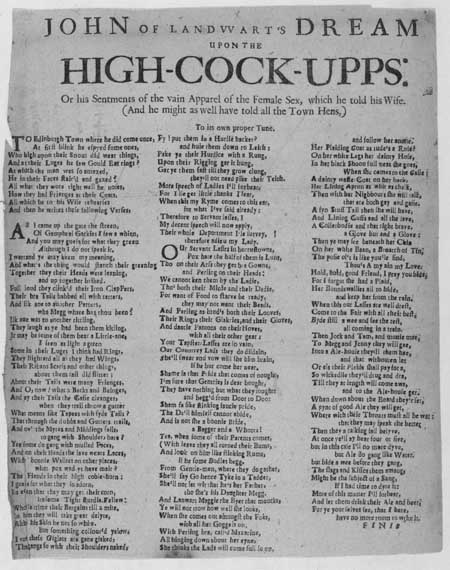Commentary
This ballad begins: TO Edinburgh Town where he did come once, / At first blink he espyed some ones, / Who high upon their snout did wear things, / And at their Luges he saw Gould Ear rings? / At which the man was so amazed, / He in their faces stair'd and gazed? It was to be be sung 'To its own proper Tune'. 'John of Landwart's Dream' is a comical, if by today's standards deeply misogynist, tirade against the clothes and jewellery worn by women. It was apparently inspired by a trip the narrator once took to Edinburgh. The poem is written in a highly energetic Scots, and after the first verse, which acts as a sort of preface, the metre and rhyme schemes change, from rhyming couplets of equal length, to a pattern of three longer, rhyming lines followed by a short fourth, with the short fourth lines rhyming in pairs. This scheme quickens the pace of the poem. Early ballads were dramatic or humorous narrative songs derived from folk culture that predated printing. Originally perpetuated by word of mouth, many ballads survive because they were recorded on broadsides. Musical notation was rarely printed, as tunes were usually established favourites. The term 'ballad' eventually applied more broadly to any kind of topical or popular verse.
View Transcription | Download PDF Facsimile
|
 |
Probable date of publication:
1703 shelfmark: Ry.III.a.10(015)
 View larger image
View larger image
|


